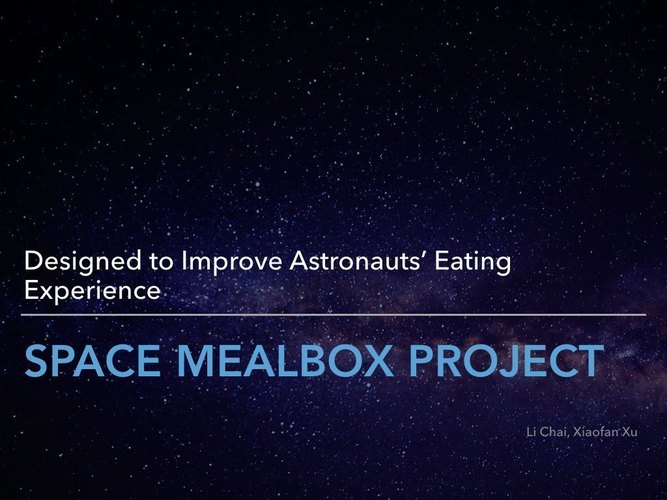
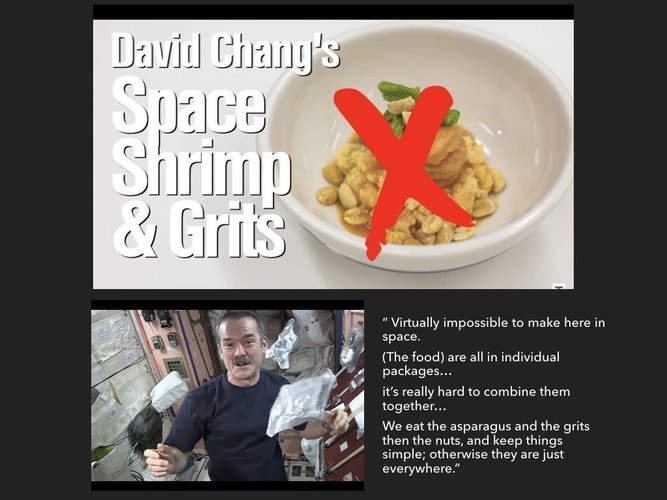
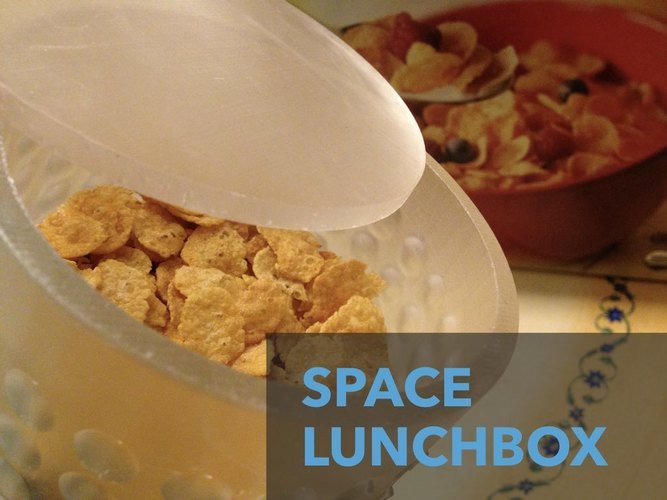
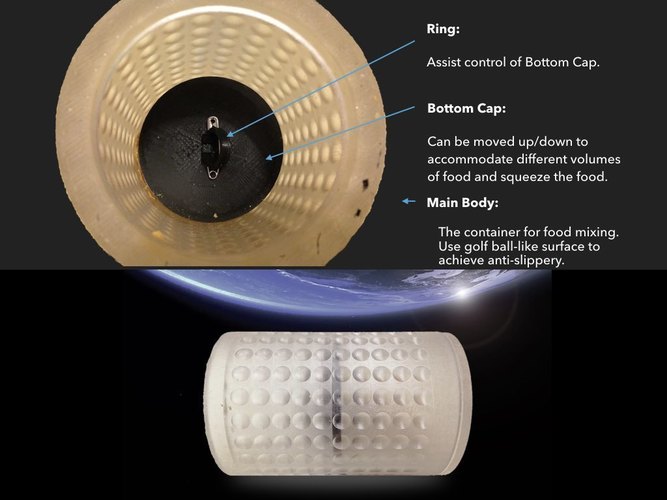
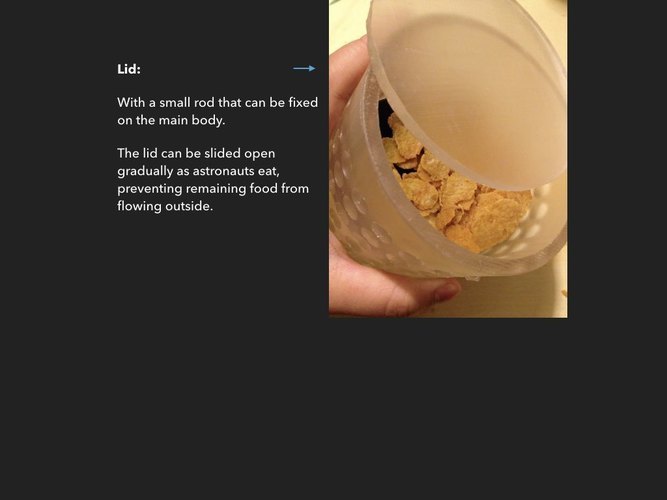
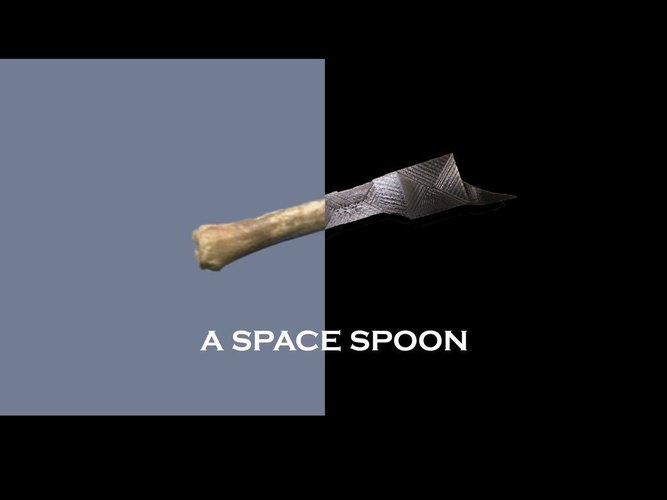
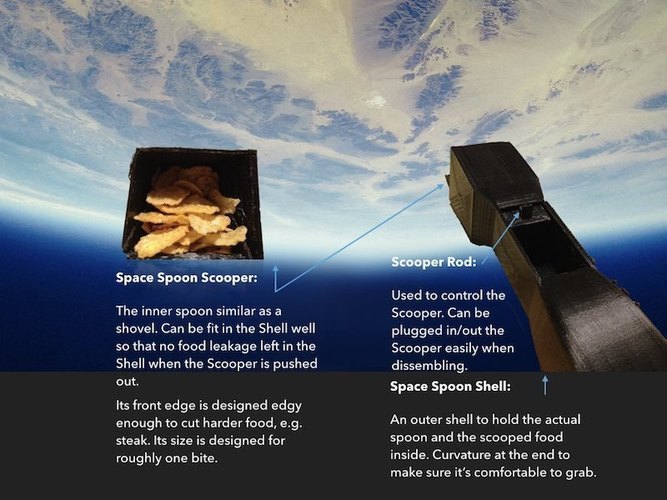
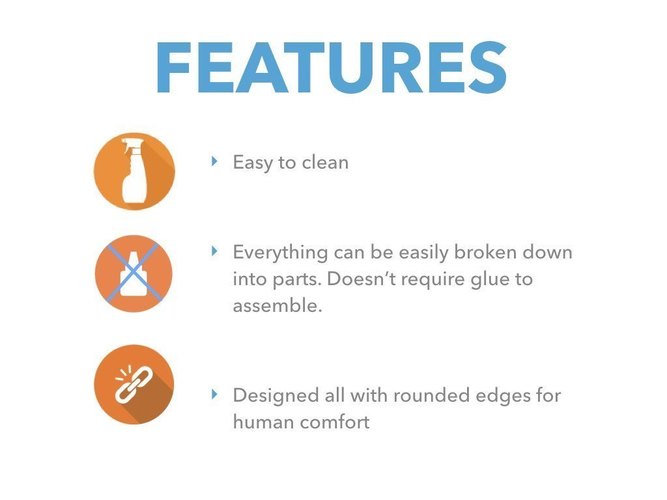
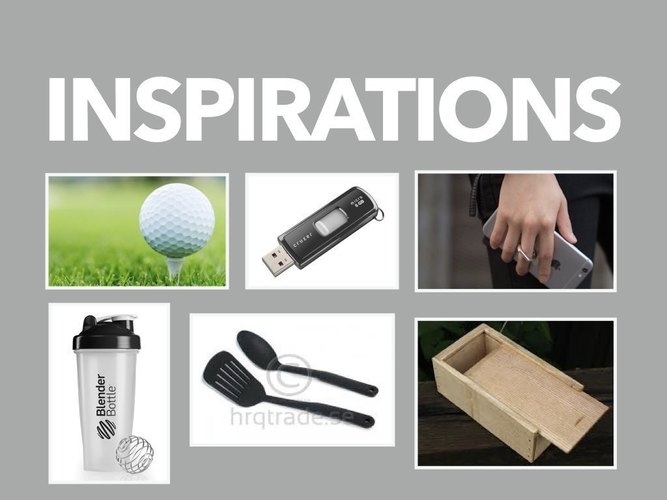

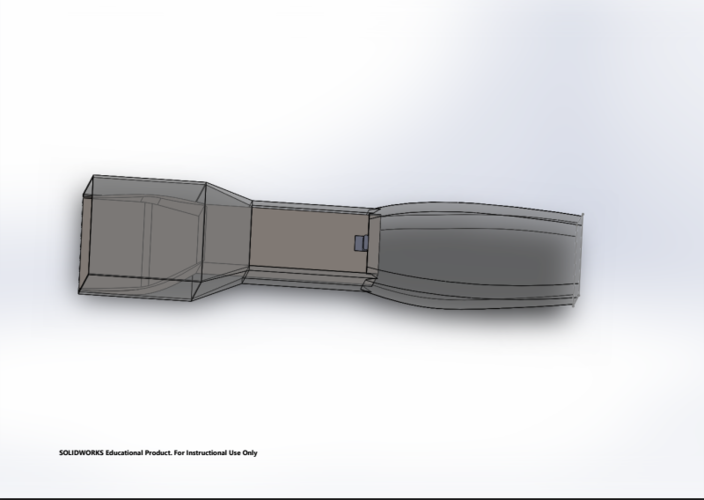
Prints (0)
-
No Prints Yet
Be the first to upload a Print for this Design!
Description
More complete design description in --> SpaceMealboxProjectDesignReport.pdf
Space Mealbox Project -Designed to Improve Astronauts’ Eating Experience
Designed by : Li Chai , Xiaofan Xu
Background
To understand how microgravity impacts on astronauts’ lifestyle in various of aspects, we watched a series of Youtube videos by Chris Hadfield, the first Canadian to walk in space. In the video, Astronaut Chris Hadfield and Chef David Chang Test Gourmet Space Food, the invited Chef David Chang created a recipe for the astronauts, but Chris Hadfield commented that the recipe was ”virtually impossible to make here in space,” because every package has to be eaten one by one otherwise they'll float everywhere.
Inspired by this video, we decided to design specialized tableware for astronauts to improve their eating experience in space. Here are our two major goals for this design: Design a food container that can mix all food from one recipe together to create a mixed flavor, like what we can have on earth; Design a food scooper that can allow the astronauts scoop and eat food from containers without having any food flying around.
Method
We used SOLIDWORKS to build our 3D models, since it has a clean and straightforward user interface for engineering purpose.
Moreover, there are 3 major reasons why we chose SOLIDWORKS over other 3D modelling software:
1. This software allows us to export our designs in STL files which are the required file format for our 3D printers on campus.
2. It allows us to build products in parts and then assemble them, which more analogous to how we print them in reality
3. It allows us to assign materials to different parts of our design, e.g. stainless steel.
Overall Design Features
- Easy to clean
- Everything can be easily broken down into parts. Doesn’t require glue to assemble.
- Designed all with rounded edges for human comfort
1. Space Lunchbox
This Space Lunchbox design fulfills our first design goal: Design a food container that can mix all food from one recipe together to create a mixed flavor, like what we can have on earth. The Space Lunchbox is made up of five different parts, shown below. For more details of different parts’ designs, please review our SOLIDWORKS file uploaded on the website.
2. Space Spoon
This Space Spoon design fulfills our second design goal: Design a food scooper that can allow the astronauts scoop and eat food from containers without having any food flying around.
Design features by component parts
1. Space Lunchbox
- Ring: Assist control of Bottom Cap.
- Bottom Cap: Can be moved up/down to accommodate different volumes of food and squeeze the food.
- Main Body: The container for food mixing. Use golf ball-like surface to achieve anti-slippery.
- Lid: With a small rod that can be fixed on the main body. The lid can be slided open gradually as astronauts eat, preventing remaining food from flowing outside.
2. Space Spoon
- Space Spoon Scooper: The inner spoon similar as a shovel. Can be fit in the Shell well so that no food leakage left in the Shell when the Scooper is pushed out. Its front edge is designed edgy enough to cut harder food, e.g. steak. Its size is designed for roughly one bite.
- Scooper Rod: Used to control the Scooper. Can be plugged in/out the Scooper easily when dissembling.
- Space Spoon Shell: An outer shell to hold the actual spoon and the scooped food inside. Curvature at the end to make sure it’s comfortable to grab.
Further Improvements & Outlook
In the near future, we are looking forward to bring our design to Mr.Dan Barry, who was an astronaut at International Space Station and is living now in the Pioneer Valley, to ask for his advice on our designs. In addition, we would like to improve the following two aspects:
Acknowledgements
We would like to thank Eric Jensen and Dale Renfrow at Smith College, who helped us multiple times print our initial prototypes. We would like to thank Shani Mensing at Mount Holyoke College, who came on campus during weekend helping us print our final design product. We would also like to extend our thanks to Prof. Katherine Aidala at Physics department and Prof. Darby Dyar at Astronomy department of Mount Holyoke College, who gave us precious feedbacks on both our designs and final report write-up. Last but not least, we thank the Space Design Contest committee for giving us this opportunity and platform to introduce our designs to others
Comments